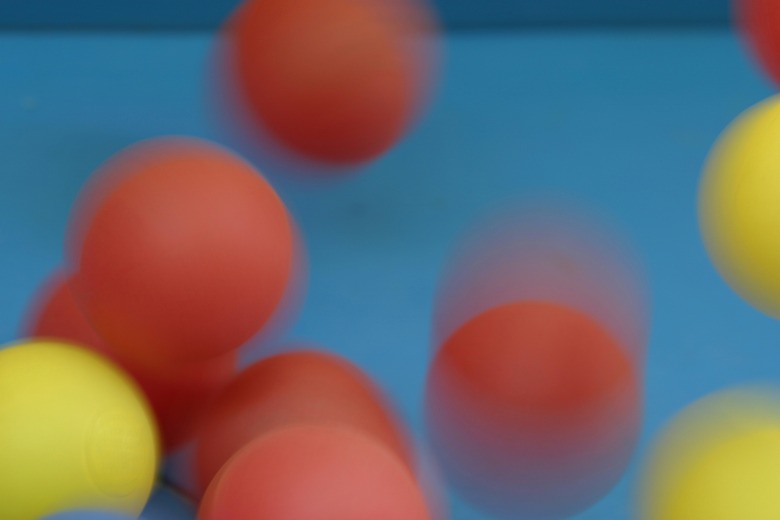Science Experiments On Bouncing & Rolling
Bouncing and rolling are two of the most common forms of motion we encounter each day, and both are rich for experimentation. You don't need any special equipment to conduct bouncing and rolling experiments. All you need are objects to bounce, objects to roll and a fair amount of curiosity.
Double Ball Bounce
Double Ball Bounce
Hold a tennis ball at chest-height, drop it onto a hard surface and notice how high the ball bounces. Then, place the tennis ball on top of a basketball and hold both balls so the tennis ball is again at chest height. Drop both balls. The tennis ball should bounce off of the basketball and fly significantly higher than it did when you dropped it directly onto the ground. This happens because the basketball hits the ground first and transfers a large amount of kinetic energy into the tennis ball. Furthermore, the surface of the basketball possesses some elasticity, which also adds a bit of a trampoline effect.
The Comeback Can
The Comeback Can
Using a nail, poke a small hole into the bottom of a coffee can, then poke an identical hole in the lid. Tape a weight — a small object, such as 9-volt battery or a steel nut or bolt — to the center of both sides of a rubber band. Place the band inside the can and thread one end through the hole in the bottom. On the outside, slip a paperclip underneath the band to hold it in place. Do the same with the other end of the band and the lid of the can. Secure the lid and roll the can. It will roll a distance, and then stop and roll back. This happens because the weight causes the rubber band to twist and store energy as the can rolls, and then releases that energy in the opposite direction.
Stored Energy Snap-Bounce
Stored Energy Snap-Bounce
Cut a racquetball in half, then trim the edge of one of the halves so it is slightly smaller than the other half. Discard the half you didn't trim. Take the trimmed half and turn it inside out. Then, drop it to the floor with the bulge facing the floor. When it makes contact, the half-ball will snap right-side-in and bounce much higher than the height from which you dropped it. This happens because turning the half inside out created tension in the material, and stored energy. When the ball strikes the floor, the energy releases and causes it to bounce higher.
Recorded Ramp Rolling
Recorded Ramp Rolling
Find or build a smooth, angled surface to use as a ramp. You can simply prop one end of a board on a pile of books. Next, gather pairs of objects of the similar mass: a 16-ounce rubber ball and a 16-ounce can of soup, or a 10-pound bowling ball and a 10-pound dumbbell. Roll each object down the ramp and carefully record the time it takes each object to roll to the bottom. Physics states that subtler features of the objects — such as the distribution of mass within each object — will affect an object's acceleration more than more obvious features, such as mass or shape. Afterward, compare your results and determine which properties of the objects were better suited for fast rolling.
Cite This Article
MLA
Cascio, Christopher. "Science Experiments On Bouncing & Rolling" sciencing.com, https://www.sciencing.com/science-experiments-bouncing-rolling-12942/. 24 April 2017.
APA
Cascio, Christopher. (2017, April 24). Science Experiments On Bouncing & Rolling. sciencing.com. Retrieved from https://www.sciencing.com/science-experiments-bouncing-rolling-12942/
Chicago
Cascio, Christopher. Science Experiments On Bouncing & Rolling last modified August 30, 2022. https://www.sciencing.com/science-experiments-bouncing-rolling-12942/
